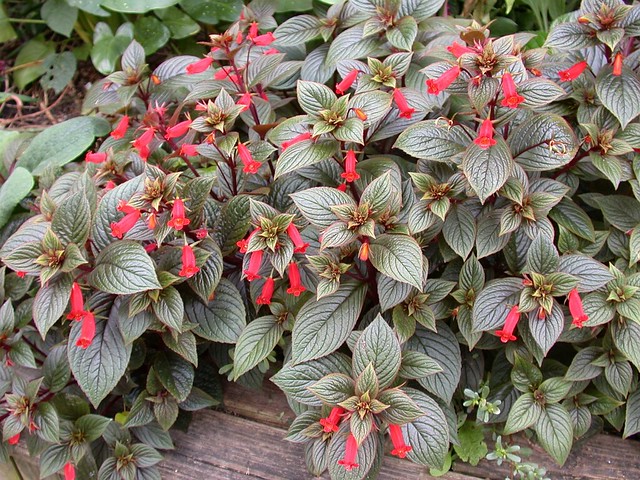
Seemannia 'Little Red' in my Washington, DC garden
I haven't worked with gesneriads for a couple of years so I got a bit of a thrill this morning when I found one of my own hybrids, Seemannia 'Little Red', listed for sale in the Fall 2015 catalog of Plant Delights Nursery. Plant Delights is considered one of the premier nurseries for rare and unusual plants, so having one of my plants listed is a pretty big deal.
Seemannia 'Little Red' is a hybrid involving S. purpurascens and S. nematanthodes 'Evita' (another PDN introduction) but you won't find it listed as Seemannia: Plant Delights is listing both 'Little Red' and 'Evita' under the genus Gloxinia. More on that below! Nevertheless I'm very pleased that this plant has passed muster in the PDN trial gardens; Tony Avent reports that it has been reliably hardy in zone 7b.
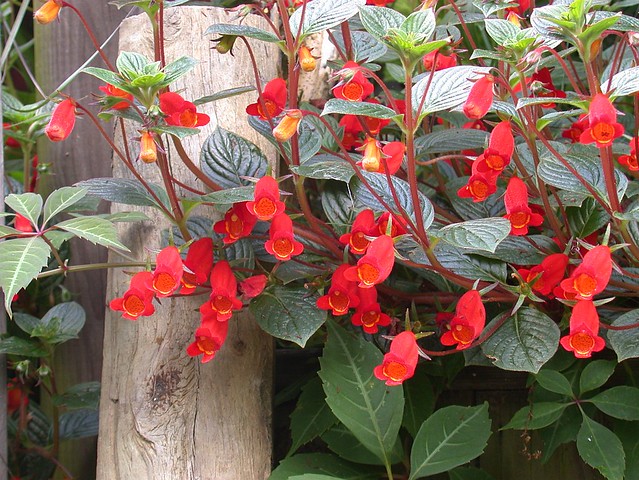
Seemannia (Gloxinia) nematanthodes 'Evita', one of the parents of 'Little Red'
It may seem awfully expensive at $17 but this is a new introduction, commercially available nowhere else, hence the premium price. I've heard many people complain about the high prices of Plant Delights, to which I reply: if the plants are too expensive, don't buy them. Find them someplace else at a cheaper price--if you can--or wait a couple of years for the price to come down. Plant Delights Nursery specializes in new, unusual, and hard-to-find plants and is often the only commercial source for a particular plant. Tony Avent is a businessman and if people didn't buy his plants (and if he didn't make some money off them) he would be out of business pretty quickly. The good news is that this plant is easy to grow and propagate, so once you have it, you will have it coming out of your ears in a year or two. Once it's more widely available, I expect the price will come down considerably. You may also be able to find it through Gesneriad Society sales.

Flowers of Seemannia 'Little Red'
I'm no longer growing this plant myself, so please don't contact me to ask for a freebie! Alas, I won't make any money myself from this plant. Gesneriads are still specialty plants of gesneriad hobbyists and hardcore plant geeks; the demand just isn't high enough to make much money off of them. I'm hoping this will change because I think this genus has a huge untapped potential as a new bedding and container plant, even where it isn't hardy. The plants are low-maintenance, pest-free, and easy to grow and propagate. The bright red flowers are very attractive to hummingbirds but the dark foliage of 'Little Red' makes the plants attractive even when they're not blooming. For more information see my previous articles Seemannia: a gesneriad with commercial potential and Seemannias as bedding plants.
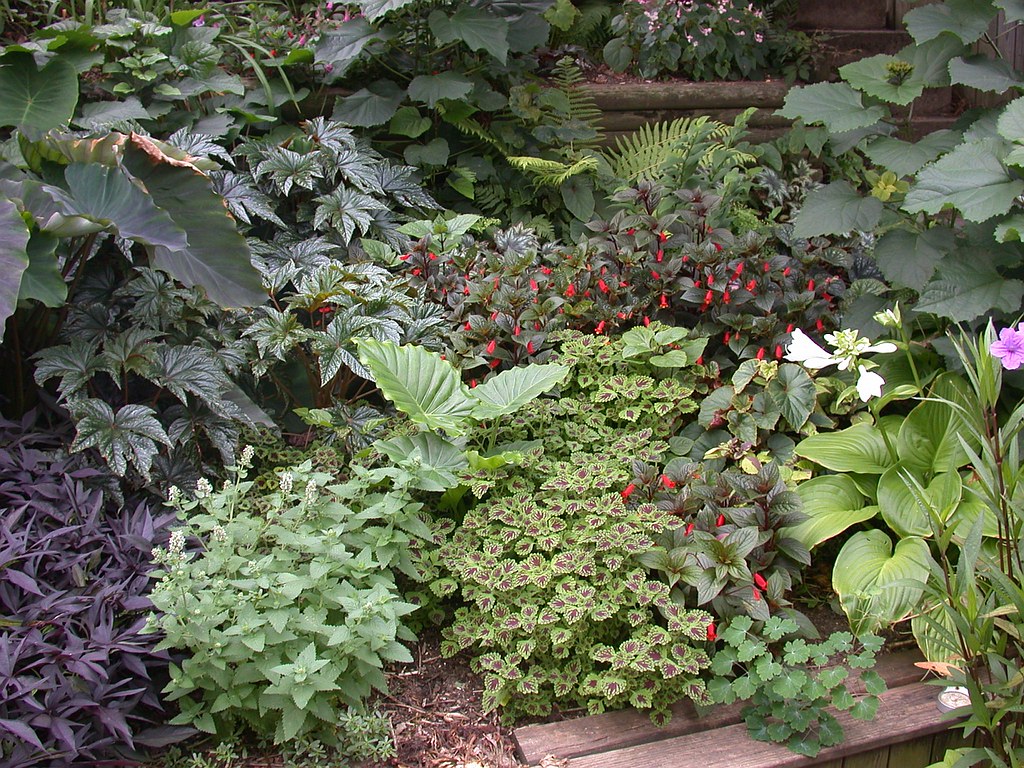
Seemannia hybrids in the garden
Seemannia is related to Achimenes (a.k.a. magic flowers, widow's tears, hot water plants, etc.) and the plants produce the same kind of scaly rhizome. Cultivation and propagation are similar, with the primary difference being that seemannias require more light. Seemannias require fertile, well-drained soil that stays neither too wet nor too dry. They will grow and bloom in bright or dappled shade but perform best with direct sun for part of the day, preferably in the morning or late afternoon.
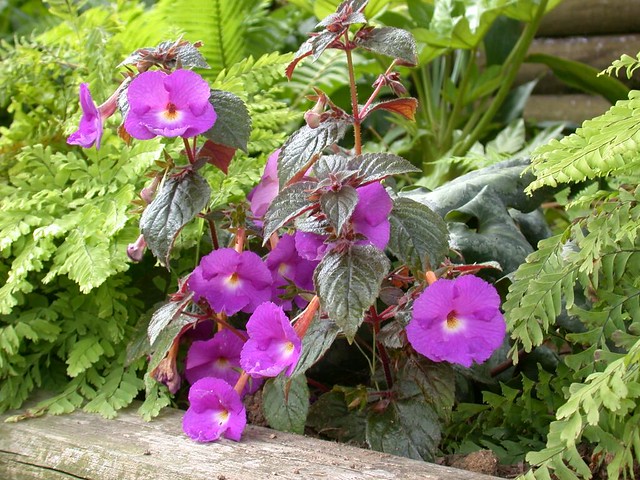
Achimenes 'Purple King', a Seemannia relative
The only tricky part is overwintering; good drainage and dry soil are necessary for overwintering in the ground, and where they aren't hardy, the scaly rhizomes should be dug up in the fall and overwintered indoors. Keep them cool and dry, and plant indoors or outdoors in the spring. Rhizomes can be broken into smaller pieces, down to individual scales, for propagation. Propagation from stem and leaf cuttings is also very easy. They can be started or propagated indoors but I don't recommend seemannias as house plants; I've found them susceptible to thrips and mildew indoors, but they have been remarkably pest- and disease-free outdoors.
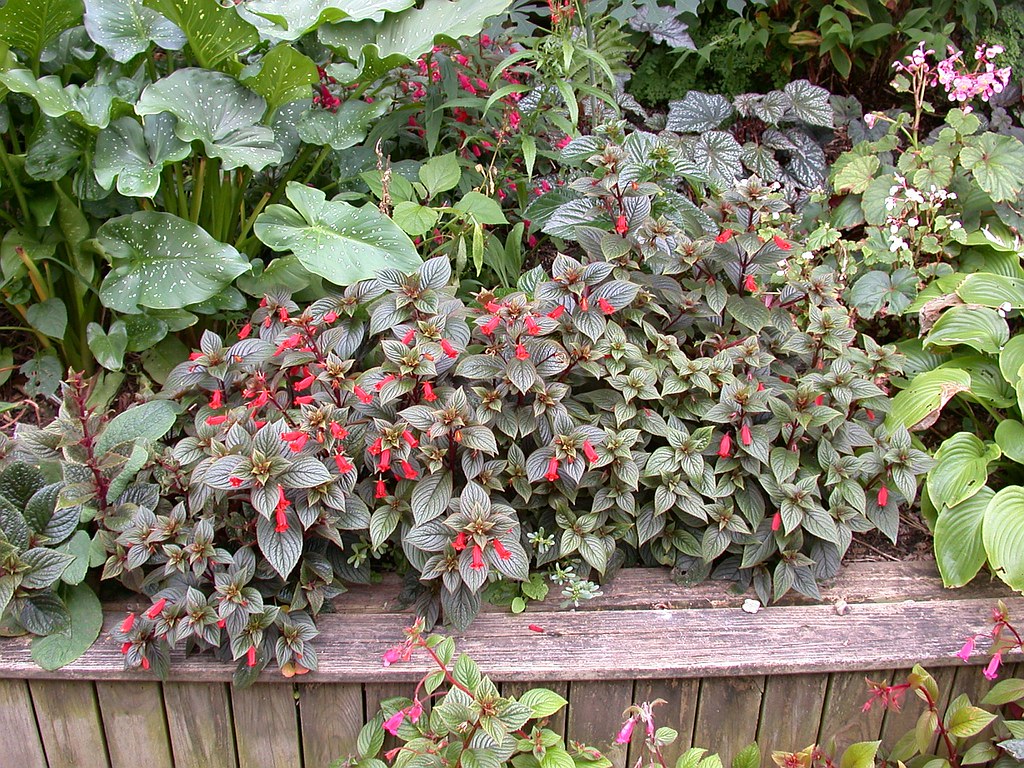
Seemannia 'Little Red', growing in sun almost all day
Why Seemannia and not Gloxinia? Several years ago, research on relationships among New World Gesneriaceae demonstrated that the genus Gloxinia, as then defined, was very artificial and unnatural. The research team (of which I was a member) decided to define Gloxinia very narrowly and resurrected an old (and once well-known) genus, Seemannia, for some of the members formerly included in Gloxinia. Gloxinia and Seemannia are still very closely related and it's really a matter of taxonomic opinion whether to combine them (as Gloxinia) or split off several species into Seemannia. In our opinion, the species we included in Seemannia were distinct enough to merit recognition as a separate genus and this new classification has been widely accepted... except at Plant Delights!
Gloxinia perennis, the original "true" gloxinia (photo courtesy of Karl Gercens)
For more information:
Seemannias as bedding plants
Seemannia: a gesneriad with commercial potential
For more technical information:
Zimmer et al. 2001, Phylogenetic relationships in the Gesnerioideae (Gesneriaceae) based on nrDNA ITS and cpDNA trnL-F and trnE-T spacer region sequences
Roalson et al. 2005, Untangling Gloxinieae (Gesneriaceae). I. Phylogenetic patterns and generic boundaries inferred from nuclear, chloroplast, and morphological cladistic datasets (pdf here)
Roalson et al. 2005, Reorganization of Tribal and Generic Boundaries in the Gloxinieae (Gesneriaceae: Gesnerioideae) and the Description of a New Tribe in the Gesnerioideae, Sphaerorrhizeae

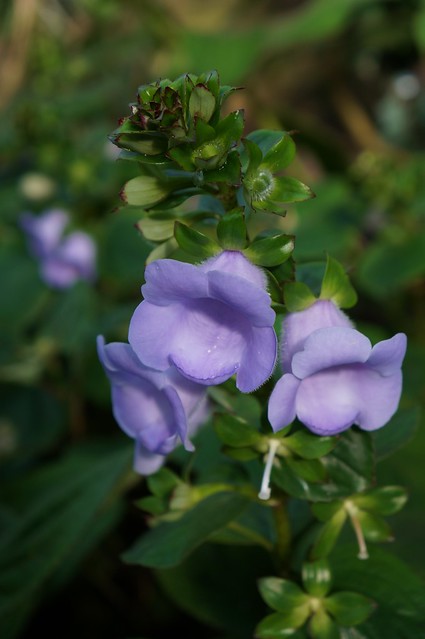
That's a beauty John, so exotic looking. Well done!!
ReplyDeleteThanks, I wanted to get some more photos out there because I'm a bit disappointed with the one they used for the PDN catalog!
DeleteBeautiful little thing. Congrats on getting PD to carry it!
ReplyDeleteWhat was your experience with summer heat? Central Arkansas seems to vary between pleasant summers in the low 90s and decent rainfall to unpleasant summers in the high 90s with no rain for 6-8 weeks at a stretch.
Thanks, as you can tell I'm pretty psyched about it.
DeleteNo problems whatsoever with heat. Shade from the hottest mid-day sun is good, as is regular watering, but my plants made it through mid to high 90's without any trouble.
Hi, can ı buy ?
ReplyDeleteHi can I purchase the seemannia in the UK at all. Thanks
ReplyDelete